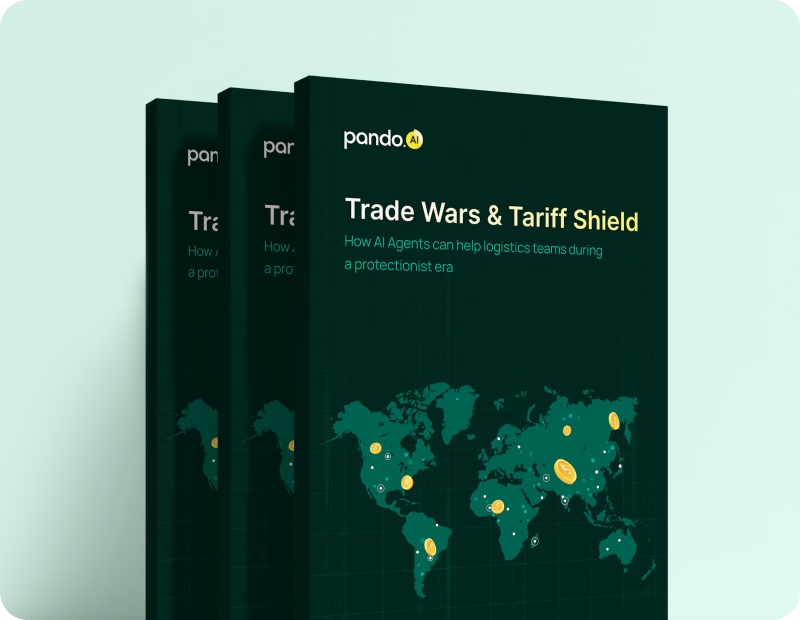-
Products Products
- Industry
- Initiatives
- Resources
- Company
- Book a demo

Before you go: Logistics leaders just dropped the truth on AI
The State of AI in Logistics 2025 is here — no hype, just real conversations and raw insights.
Managing in-house vs outsourced logistics debate: A perspective for industrial manufacturing companies
Unveiling the core dynamics and growth drivers shaping the retail supply chain landscape.
Published on July 15, 2024 • 6 mins read
Durga Pratiha

Unveiling the core dynamics and growth drivers shaping the retail supply chain landscape.
Did you know that industrial manufacturers often face logistics challenges that impact their production schedules and bottom lines? If you're in this vast industry, which includes sectors like heavy machinery, Hi-tech and medical devices, and complex discrete manufacturing, you likely share common logistical hurdles. Managing multiple suppliers, handling bulky raw materials, and coordinating intricate production processes are just a few of the challenges you face.
When choosing a logistics strategy, several key factors must be considered. Cost is critical since logistics can represent a substantial portion of your operational expenses. Additionally, leveraging your business's core competencies—what you do best—can help you decide whether to keep logistics in-house or outsource them. The impact on customer experience (CX) is also crucial; efficient and reliable logistics are essential for meeting customer expectations and maintaining a competitive edge.
Key characteristics of the supply chain in industrial manufacturing
Managing the supply chain for industrial manufacturing involves unique challenges that require specialized solutions. Here's what sets them apart:
🔸Complex supply chains with multiple suppliers
Industrial manufacturing involves managing a diverse array of suppliers, each contributing different components or materials. Coordinating these suppliers is challenging, especially when it comes to maintaining consistent quality and delivery schedules. Samsung Electronics, a major electronics manufacturer, sources materials and components globally for its smartphones and TVs, relying on suppliers for chips (such as Taiwan Semiconductor Manufacturing Company, SK Hynix or Micron Technology for memory chips, and Texas Instruments or Infineon for power management chips). Any delays or quality issues, as seen in recent chip shortages impacting the industry, can disrupt production. Without efficient logistics, delays or quality issues can arise, disrupting the entire production process.
🔸Heavy machinery and large volumes of raw materials
Transporting heavy machinery and bulky raw materials requires specialized logistics, demanding careful planning for adequate storage space, the right transportation methods, and ensuring the safety of the goods during transit. You must navigate these complexities to maintain efficiency and prevent costly delays. Take Caterpillar, for instance, which manufactures large excavators and bulldozers. Moving these massive machines to construction sites or procuring raw materials from global suppliers around the world demands precision and specialized handling to ensure they arrive safely and on time.
🔸Intricate production processes
Industrial manufacturing relies on precise production processes that must be synchronized to avoid delays. Efficient logistics are essential to ensure that each component arrives at the right place and time, keeping your production line running smoothly. Intel’s manufacturing of microchips requires meticulous coordination, involving countless parts and intricate steps. Any delay in logistics can disrupt production, leading to significant financial losses.
🔸Managing inventories of parts and finished products
Balancing inventories of raw materials and finished products is critical in industrial manufacturing. Efficient inventory control strategies help you prevent stockouts (running out of stock) and overstock situations, both of which can be costly. For instance, Boeing must carefully manage its inventories of materials like aluminium and titanium, as well as its finished aircraft parts. By implementing effective inventory control, you can ensure that production continues smoothly without interruptions or excess costs.
🔸Coordinating shipments to various customers
Delivering finished products to a diverse customer base, including international clients, demands efficient logistics and strategic supply chain management practices. The unparalleled importance of timely and accurate deliveries not only upholds customer satisfaction but also fortifies competitiveness in today's dynamic market. As highlighted by Vijay Gurumurthy from Cummins, it's crucial to ensure that products are packaged to withstand being stored at the customer's location for several weeks without suffering wear and tear, demonstrating the meticulous attention to detail required to maintain product integrity. Check out this video to know more.
The in-house vs outsourced decision: Weighing the pros and cons
There's no one-size-fits-all answer when it comes to managing logistics. The decision to keep logistics in-house or outsource to third-party logistics providers (3PL/4PL) depends on various factors unique to your business. Here’s a breakdown of the pros and cons of both options in the context of Industrial Manufacturing. 

Industry trends influencing the move to In-house logistics
Several industry trends are shaping the decision to manage logistics in-house for industrial manufacturers, with both compelling benefits and considerations to keep in mind.
Increased focus on customer experience: As customer expectations rise, many industrial manufacturers based in the USA, such as Accuride Corporation, are turning to in-house logistics to enhance responsiveness and offer a compelling customer experience. This strategy enables quick adaptation to customer demands, ensuring precise and prompt deliveries. Direct oversight of logistics allows for rapid responses to urgent orders, essential for sustaining customer satisfaction and staying ahead in the competitive market. Check out this video, to learn more about navigating the supply chain effectively.
Advancements in logistics technology: The advent of automation, artificial intelligence, and low-code/no-code software has made in-house logistics more feasible and efficient. These technologies can streamline operations, reduce errors, and provide valuable insights through data analytics. Automated warehousing systems, AI-driven logistics planning, and inventory management are prime examples of how these technologies optimize supply chain operations and drastically reduce costs. However, it is crucial to acknowledge that while these advancements offer substantial benefits, their successful implementation necessitates significant planning and leadership alignment.
Growing emphasis on sustainability: In light of escalating regulatory and consumer demands for sustainable practices, industrial manufacturers are capitalizing on in-house logistics to enhance control over and optimize their environmental footprint. By internalizing logistics management, companies can execute eco-friendly initiatives like route optimization for enhanced fuel efficiency, waste reduction, and the adoption of sustainable packaging. This strategic control not only facilitates the attainment of sustainability targets but also elevates corporate social responsibility status.
Need for greater agility in the market: Market volatility and changing customer demands are driving the need for more agile supply chain operations. In-house logistics provide the flexibility to quickly adapt to these changes, enabling manufacturers to pivot strategies without the delays often associated with outsourcing. For example, in-house teams can swiftly reorganize logistics plans to respond to supply chain disruptions or sudden shifts in demand. However maintaining such agility requires a robust logistics infrastructure and a dynamic workforce capable of rapid adaptation.
Rise of data-driven decision-making: The increasing use of data analytics in logistics decision-making is another trend favoring in-house management. By controlling logistics internally, manufacturers have direct access to data and can leverage it to make informed, strategic decisions. This includes optimizing routes, predicting inventory needs, and identifying cost-saving opportunities. Having a centralized data management system enhances the ability to make real-time adjustments and improves overall supply chain efficiency.
Finding the right balance
Deciding between in-house and outsourced logistics involves carefully weighing the pros and cons. In-house logistics offers control, customization, and better integration with your operations. Outsourced logistics provide flexibility, cost savings, and specialized skills, though they may limit control and integration.
Here’s the catch: a hybrid approach, combining both in-house and outsourced logistics, can offer the best of both worlds, optimizing your operations to stay competitive and responsive to industry trends. You may choose to bring a part of your supply chain in-house (say inbound or outbound or different legs of movement) to measure control and agility before progressively scaling it across the entire logistics process. You can leverage a TMS solution in this context. Integrating these solutions is crucial for an efficient supply chain. But how do you know if a TMS is right for your in-house needs? This two-part blog series on the business case for a TMS will help you decide. Part 1 and Part 2.
With the democratization and accessibility of technology and AI through TMS solutions, there is an emerging trend across industrial manufacturing organizations to exercise more control and build agility across their supply chains by bringing them in-house.
Subscribe to Pando blog and Crossroads newsletter now!
Stay up to date with the latest logistics, transportation, and supply chain tips and news.
Subscribe Here!













